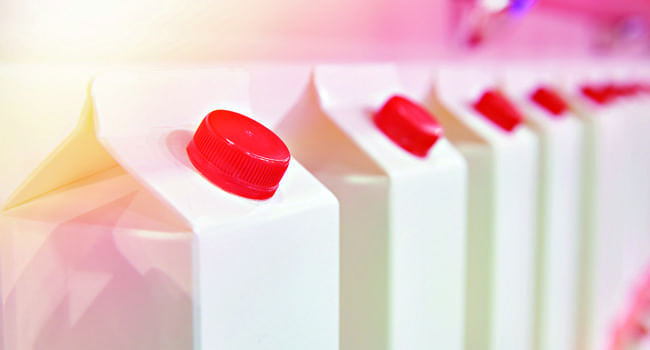Pressures to eliminate single-use paper goods and reduce plastic consumption are spurring developments in papermaking and coating technologies, a new market report from Smithers has identified.
The Future of Functional & Barrier Coatings for Paper and Board to 2026 says the market for functional and barrier coatings used in paper and board packaging applications reached almost 3 million tonnes in 2020, with North America and Western Europe accounting for half the total volume. The materials are applied to paper and board packaging to provide a barrier against the ingress or egress of water and water vapour, oil and grease, oxygen and aroma, for the products packed.
The market was fairly evenly split in volume terms across the three main regions of the Americas, EMEA and Asia-Pacific in 2020, though there will be a noticeable shift in market share away from the Americas over the medium term in favour of the Asia-Pacific region.
From 2021 to 2026, the market for these materials is expected to increase by almost one million tonnes, showing average annual growth of over 5% during this time and adding over $2 billion to the value of the market at constant 2020 prices. The Asia-Pacific region and Africa are likely to show above average growth over the period, gaining volume market share from the Americas, Western Europe and the Middle East.
Growth rates by geographic location, CAGR%, 2021 to 2026
 Source: Smithers
Single-use paper cups and plastics replacement
Source: Smithers
Single-use paper cups and plastics replacement
Growing awareness of the environmental pressures caused by single-use disposable paper cups among both suppliers and end users is seeing an increase if the usage of re-usable cups. Many consumers now purchase their own re-fillable cups to avoid the use of the disposable variety, and new recyclable, biodegradable and poly-free products continue to enter the market. Similarly, global awareness of the need to reduce plastic consumption, especially non-recyclable packaging products, has drawn the development of substitute products into sharp focus. Developments in both papermaking and coating technologies have brought many new products to this market.
Food packaging
A wide range of materials are used to package food and beverages, which account for almost 80% of volume demand for functional and barrier coatings on paper and board packaging. Value demand for food packaging is expected to increase on average by almost 4% annually between 2021 and 2026 at constant 2020 prices. Paper packaging will likely show above average growth with board consumption driven largely by growth in online shopping, while technological advances in paper making will fuel the increase in market share of flexible papers over flexible plastics. Moulded fibre packs are expected to show good growth, according to Smithers’ research. Glass, metal and flexible foil packs are likely lose market share over the review period.
Increased use of recycled paper and board
Recycled fibres accounting for almost 80% of the total volume of containerboard production in 2020, while penetration of the cartonboard market has been slower where recycled material accounted for almost 60% of total volume production in 2020, with this expected to increase to 66% by 2026. Flexible papers are further behind in the use of recycled materials, with less than 30% of the 2019 production volume consisting of recycled fibres. Interestingly, moulded fibre suppliers expect the use of recycled materials to decrease from over 83% of 2019 volumes to about 71% in 2025, though this will be taken up by alternative materials such as straw, bagasse, cotton, recycled textiles, etc., rather than by virgin cellulose fibres.
Regulations
Regulations of packaging mainly originate in Europe and North America, although other regions are joining the thrust as much of what they produce is exported around the world. The most recent and restrictive of these regulations is the European Single Use Plastics (SUP) directive. This restricts the use of many plastic items within the EU and is having an impact on consumer behaviour. American government regulations are growing but do so according to state- and city-specific criteria rather than national policy. In the Asia-Pacific region regulations have been adopted in China and Thailand, as well as some cities in Indonesia, while India has announced legislation in August 2021 that bans some SUPs and regulates the use of plastic carrier bags. Several countries, including Canada, Thailand, Rwanda and Bangladesh, as well as Mexico City, provinces in Australia and several states in the US, have passed bans on single-use plastic bags.
Find out more

